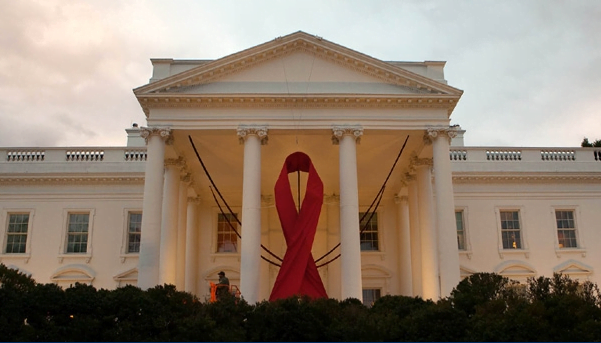Top quotes, remarks, and ruminations from a variety of global leaders marking World AIDS Day. Have something that should be included? send it our way, or tweet us @undispatch.
Few could have imagined that we’d be talking about the real possibility of an AIDS-free generation. But that’s what we’re talking about. That’s why we’re here. And we arrived here because of all of you and your unwavering belief that we can — and we will — beat this disease.
Because we invested in anti-retroviral treatment, people who would have died, some of whom are here today, are living full and vibrant lives. Because we developed new tools, more and more mothers are giving birth to children free from this disease. And because of a persistent focus on awareness, the global rate of new infections and deaths is declining.
So make no mistake, we are going to win this fight. But the fight is not over — not by a long shot.
Susan Rice:
On World AIDS Day, we honor heroes in the fight against HIV/AIDS and join in remembrance with those who have lost loved ones. Above all, we reaffirm our commitment to defeating HIV/AIDS. I am proud to join President Obama’s call to achieve an AIDS-free generation.
On the 30th anniversary of HIV/AIDS, the United States is mounting an extraordinary effort to win this fight. The President’s Emergency Plan for AIDS Relief has transformed the lives of millions of people since it was created by President Bush in 2003. In the current fiscal year alone, it has provided antiretroviral treatment to more than 3.9 million people. At the same time, PEPFAR has become more efficient, driving down
costs per patient from over $1100 to $335 per year. As a consequence, record numbers of lives have been improved by PEPFAR programs under the current Administration.Today, President Obama announced that we will increase our treatment targets from 4 million to 6 million people by the end of 2013 and ramp up our targets for other prevention methods, moving us closer to the AIDS-free generation that we know is now possible. But there is far more work to do. To this day, AIDS-related illnesses have claimed more than 25 million lives, exceeding the death toll of any conflict during 30 years of struggle. HIV/AIDS has strained states, fractured families, and
contributed enormously to the vicious cycle of global poverty that creates havens for those who wish to do harm. We urge our partners around the world to join us in doing more to eradicate this global threat.As President Obama has noted, an AIDS-free generation is an ambitious but achievable goal. By following the science, committing to smart investments in both prevention and treatment, and sharing responsibility, we can realize his vision. On World AIDS Day and every day, let us honor and support those who will rid the world of this devastating disease.
“We have many reasons to celebrate the accomplishments and progress made in the fight against HIV/AIDS. New HIV infections have been reduced by 21% since 1997 and deaths from AIDS-related illnesses have decreased by 21% since 2005 – the lowest rates since the peak of the epidemic, according to a new report by the Joint United Nations Programme on HIV/AIDS (UNAIDS). But we also recognize the tremendous work that remains in this urgent, global fight.
“Today we stand with our partners at the Global Fund to Fight AIDS, Tuberculosis and Malaria, UNAIDS and (RED), to encourage everyone to reach the global goal of an AIDS-free generation by 2015. We have the tools necessary to prevent the disease, but we can’t do it alone.
“Join us at the UN Foundation on this World AIDS Day to make a difference. It’s easy to help. You can donate or share the message with your friends and colleagues. Together, with your support, we can change the course of the HIV/AIDS epidemic.”
Heading into the fourth decade of AIDS, we are finally in a position to end the epidemic. The progress we have made so far is proof that we can realize our vision of zero new HIV infections, zero discrimination and zero AIDS-related deaths.
The number of new HIV infections has fallen by more than 20 per cent since 1997. New infections are continuing to decline in most parts of the world. In sub-Saharan Africa, the region most affected by the AIDS epidemic, HIV incidence has decreased in 22 countries.
Among populations at risk, the tide is shifting. Access to HIV prevention services are helping young people, sex workers and their clients, people who inject drugs, men who have sex with men, and transgender people to take control of their health for greater well-being.
Treatment has averted 2.5 million AIDS-related deaths since 1985. Last year alone, 700,000 lives were saved. Some 6.6 million people, nearly half those who need treatment in low- and middle-income countries, are now receiving it. Synergies between prevention and treatment are speeding up progress. But, to end AIDS, we need to deliver even greater results.
This year in June, the United Nations General Assembly’s High-Level Meeting on AIDS adopted bold targets for 2015: reduce the sexual transmission of HIV by half; eliminate new infections in children; provide treatment for 15 million people living with HIV; end stigma and discrimination; and close the AIDS funding gap. With strong political will, reasonable financial resources and a firm human rights-based approach, we can achieve all of these targets.
Financing will be critical to success. I urge all concerned to act on the investment framework put forward by UNAIDS and to fully fund the global investment target of up to $24 billion annually. The results would offset the upfront costs in less than one generation. We must build on the political commitments, investments, energy, activism and determination that have brought us to this turning point. Momentum is on our side. Let us use it to end AIDS — once and for all.
